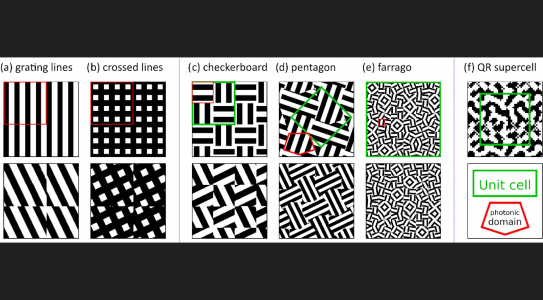How can we boost solar panel efficiency? The answer may surprise you - Dispatch Weekly
October 23, 2020 - Reading time: 3 minutes

Solar cells have the potential to dissuade more people from generating electricity by burning coal, but an innovation developed by scientists could significantly increase the amount of light absorbed by conventional solar cells.
In the new study, a team of scientists from the UK, Portugal and Brazil found that etching a simple pattern on the surface of crystalline silicon (C – Si) on a solar cell can increase the ability to generate electricity by up to 125 per cent. Comparable experiments with simple mesh construction have so far yielded only marginal improvements in solar irradiation, the team says.
While the discovery represents a major step forward, Schuster and his team say that using existing solar cell technology with a simple pattern on the surface of silicon could significantly increase the ability to generate electricity from the sun. This leads to a remarkable increase in the efficiency of solar cells, not to mention the potential for all kinds of alternative solar-based designs, including photovoltaic systems, wind turbines, and solar thermal power plants. 
After studying new structural designs based on natural textures and computer algorithms, the researchers focused on finding theoretical considerations that would generate an optimized pattern for scattering and diffraction of sunlight. The aim was to get the solar cells to absorb more energy by capturing more sunlight and reflecting less of it.
In an experiment, the team simulated a patterned photonic domain consisting of a grid of lines arranged in a three-dimensional model of solar cell design and compared it with other types of solar cell designs, including lines that cross. The modelling suggested that the basic diffractive elements, such as the cross-section axis, arranged on the gridline could be optimized by aligning them like grid lines. The results suggest that a random rotation of these repetitive units produces a more efficient diffraction pattern than competing cells with a different lattice structure.
Moreover, the team says, checkerboard constructions are easy to manufacture on an industrial scale because of their inherent simplicity. The researchers admit that their modelling results are somewhat less impressive until manufacturing is in place, depending on the quality of certain materials used to manufacture and encapsulate the cells. But they could be a significant step towards more efficient solar cells, they say.
Changes in etching depth and plate size would also have an impact. Besides, the team believes that the resources used to make the cells could be increased tenfold to produce such thin solar cells with checkerboard patterns. However, they noted that the design principles deployed in this research could have implications for related areas that could lead to the development of more efficient photovoltaic cells such as solar cells.

DW Staff
David Lintott is the Editor-in-Chief, leading our team of talented freelance journalists. He specializes in covering culture, sport, and society. Originally from the decaying seaside town of Eastbourne, he attributes his insightful world-weariness to his roots in this unique setting.




